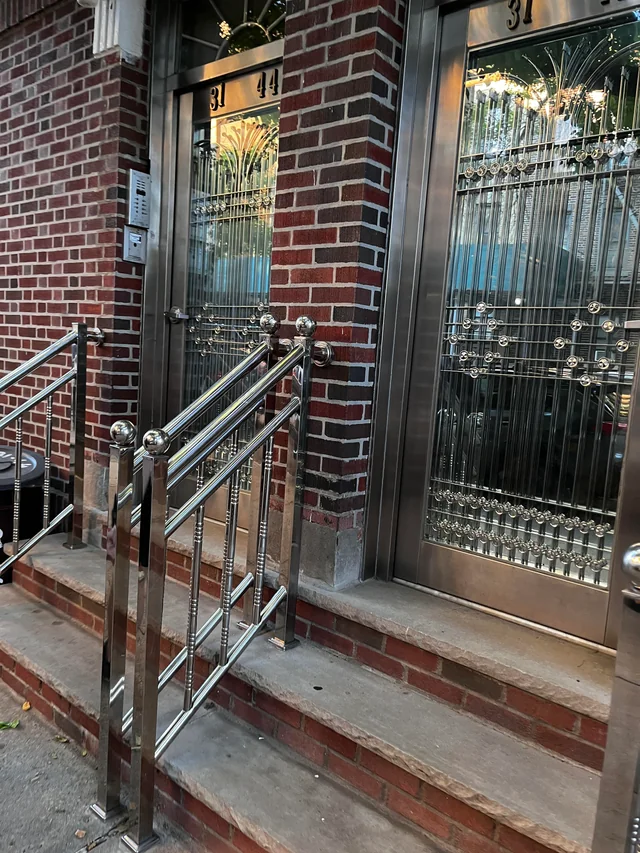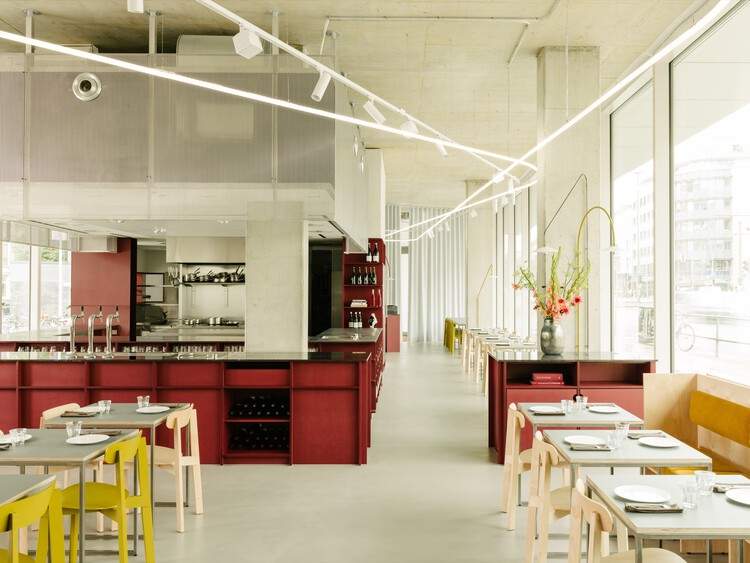Shining Boundaries: The Stainless Steel Fence as a Mark of Achievement
The stainless steel fence trend, commonly found in neighborhoods like Flushing, Queens, and Sunset Park, Brooklyn, has become a status symbol among Asian homeowners. Designed to stand out with personalized embellishments, these fences signify success and a modern aesthetic. The rise in stainless steel fencing parallels the growth of Asian immigration in New York, starting in the 2000s. Though some view the fences as flashy, they provide practical benefits like low maintenance. The material, rooted in cultural significance, is shaped by local fabricators, reflecting the diverse communities that embrace this form of expression.
On residential streets in Flushing, Queens, and Sunset Park, Brooklyn, stainless steel fences are seen as a mark of status and success. These gleaming silver barriers, sometimes accented with gold, line many homes, standing in stark contrast to the modest houses they encircle. Homeowners proudly invest in these fences, viewing them as a symbol of having “made it.”

Dilip Banerjee, a resident of Flushing, paid $2,800 for his stainless steel fence, which he chose for its superior quality over wrought iron. He also added handrails, a door, and an awning. Banerjee, reflecting on his upbringing, remarked, “My parents never drove a good car, but I have a Mercedes,” emphasizing the significance of his home’s shiny new addition.
Much like the white picket fence has long symbolized the American Dream, the stainless steel fence evokes a similar sense of accomplishment, but with a much flashier presentation. These fences, often featuring intricate designs like lotus flowers, geometric patterns, and cultural symbols such as the “om,” do not blend in. Instead, they stand out even more when illuminated by streetlights or car headlights, with their gleam being the whole point — a bold display that the homeowner has achieved success.
According to Thomas Campanella, a historian of urban planning at Cornell University, stainless steel fences have become a status symbol for middle-class homeowners, particularly those purchasing their first homes. Their rise in New York City coincided with a surge in Asian immigration. Between 2010 and 2019, the population of Asian and Pacific Islander immigrants grew from 750,000 to nearly 845,000, with Queens being home to more than half of these immigrants. Campanella estimates that stainless steel fences began gaining popularity during the same period.
In Sunset Park, Puerto Rican resident Garibaldi Lind noticed the fences multiplying after his Hispanic neighbors sold their homes to Chinese families. “There’s two down there,” Lind said, pointing down 51st Street, “Up here, there’s three more.”
The trend, however, isn’t limited to Asian homeowners. Farida Gulmohamad, a real estate agent from Guyana, noted that West Indian households in neighborhoods like Queens Village and Richmond Hill have also embraced these fences. “It is our status symbol,” she said.
While stainless steel fences are appreciated by some, others are less enthusiastic. Photographer Rafael Herrin-Ferri, author of All the Queens Houses, expressed his distaste, describing them as “too shiny” and attention-grabbing. To him, they appear out of place in Queens’ varied architectural landscape. Nonetheless, the fences’ low-maintenance appeal is undeniable. Unlike wrought iron, which needs repainting, stainless steel remains polished with little upkeep. Many newly renovated houses are adorned with these shiny fences, as they are considered modern and valuable.
Real estate agents have also noted this preference. Priya Kandhai, who frequently lists homes in Queens, explained that South and East Asian clients are particularly drawn to stainless steel fences and awnings. The material makes a house feel more valuable and updated, much like how a stainless steel appliance is viewed as more desirable than a plastic one.
The story of stainless steel dates back to 1913, when it was first invented in the United Kingdom. However, its widespread adoption didn’t occur until the 1980s and 1990s, particularly in China. According to Tim Collins, secretary-general of the World Stainless Association, stainless steel’s popularity surged because of its durability and customizability. Unlike wrought iron, stainless steel is easier to shape into intricate designs that reflect cultural heritage, making it a natural choice for those who want to combine tradition with modern aesthetics.
Wu Wei, an associate professor at Nanjing University, pointed out that the ornate designs on stainless steel fences in New York often have roots in traditional Chinese patterns associated with good fortune, such as the Chinese character “fu” (luck), cranes symbolizing longevity, or flowers representing blossoming. In China, these designs have long been used in homes to signify wealth and success.
As Chinese immigrants brought their affinity for stainless steel to New York, local metal fabrication shops sprang up in Queens and Brooklyn to meet the demand. Cindy Chen, a first-generation immigrant, knew she wanted stainless steel window guards and gates when searching for an apartment in Sunset Park, as they reminded her of her home in China. For her, the material’s resistance to rust and its polished appearance were appealing. Chen also felt safer with stainless steel protection, particularly given the rise in pandemic-fueled hate crimes against Asian Americans.
Other homeowners share similar sentiments. Banerjee, who emigrated from Kolkata in the 1970s, has spent years renovating his house, adding stainless steel accents like railings and gates to match his vision of success. He takes pride in the fact that his home, now protected by a shining fence, is growing in value.
Hui Zhen Lin, another Sunset Park resident, bought her house partly because of its stainless steel gates. She values the low maintenance they offer, unlike iron, which requires repainting. Similarly, Xiu Zou, who recently moved into an apartment in the area, feels more secure with her stainless steel door, considering it a safer alternative to wooden ones.
Behind the widespread use of these fences are the metal fabricators who shape them. In Flushing, workshops producing stainless steel fences line College Point Boulevard. Chuan Li, a co-owner of Golden Metal 1 Inc., has been working with steel for more than a decade after moving from Wenzhou, China, 15 years ago. For Li, metal fabrication was less a passion and more a practical way to make a living. “I had no choice, really. I had to make a living,” he said. Despite spending his days working with steel, he prefers plastic fences for his own home.
Li designs fences based on customers’ preferences, charging around $75 per foot for each job. He listens to clients, learns their pattern choices, and then begins bending and welding the raw materials into a finished product. Another fabricator, Hao Wei An, co-owner of New Tengfei Stainless Steel, has worked in the industry both in China and the U.S. He doesn’t want his son to follow in his footsteps, noting that the job requires wearing a mask every day because of the dust and smoke.
For artist Anne Wu, stainless steel fences offer a different kind of inspiration. Wu, who grew up in Flushing, has been fascinated by the material, observing its rise over the past decade in her neighborhood. Last year, she created a large stainless steel installation for The Shed, an arts center in Hudson Yards. Wu explained that her piece aimed to allow viewers to walk through the material, offering a new perspective on something typically seen from the outside. The reflective nature of the steel, she noted, mirrors its environment while demanding attention, much like the fences she grew up seeing around Flushing.
Stainless steel, with its cultural roots and evolving aesthetic, continues to reshape the landscape of New York’s neighborhoods. The ability to create unique designs through custom stainless steel profiles has allowed fabricators to cater to the diverse preferences of homeowners, ensuring that this material remains a prominent feature in the city’s architectural landscape.


